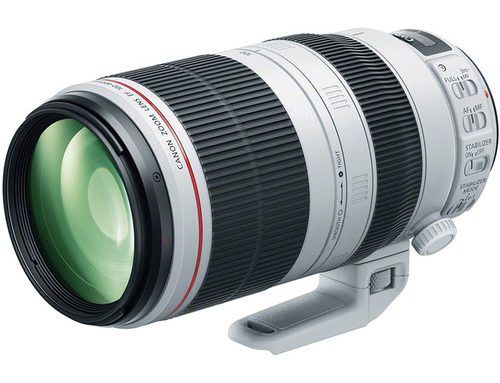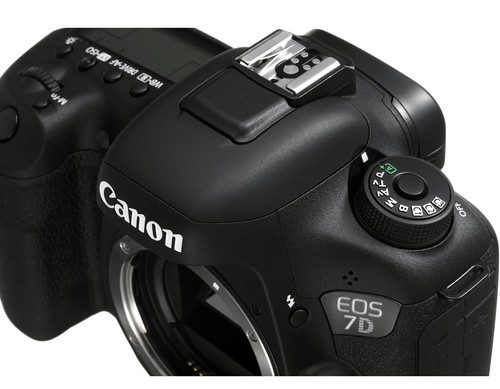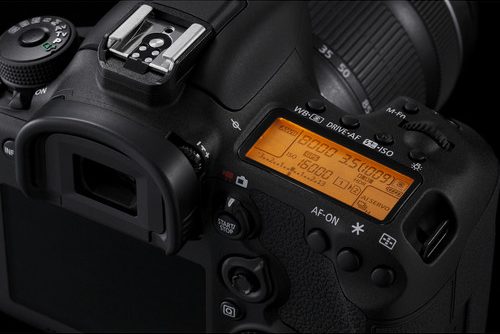Wildlife photography is one of the most demanding genres. You need a camera that’s fast, rugged, and able to deliver sharp images at a moment’s notice. That kind of performance usually comes with a big price tag—unless you know where to look.
The Canon 7D Mark II is a DSLR that’s been around since 2014, but it’s far from outdated. In fact, many wildlife photographers still rely on it today. With its rapid burst rate, pro-level autofocus, and crop sensor reach, the 7D Mark II delivers serious performance at a price that’s hard to beat in 2025.
If you’re looking to get into wildlife photography or want a capable second body for the field, the Canon 7D Mark II might be the best budget camera you can buy. Let’s take a closer look at what makes this camera such a standout option for nature lovers.
Table of Contents
- Built for Action: Fast, Reliable Autofocus
- 10 fps Burst Rate: Catch the Moment
- APS-C Sensor Advantage: More Reach for Less
- Tough, Weather-Sealed Body for the Field
- Long Battery Life for All-Day Shoots
- Compatibility with Pro Canon Lenses
- Real-World Performance and Image Quality
- Affordable in Today’s Used Market
- Downsides to Be Aware Of
- Final Thoughts: Still a Wildlife Workhorse in 2025
- FAQ
Built for Action: Fast, Reliable Autofocus
The Canon 7D Mark II features a 65-point all cross-type autofocus system. That means it can quickly lock onto moving subjects with incredible accuracy. Whether you’re tracking birds in flight or deer darting through the trees, the autofocus keeps up. See it in action in the video above by The Open Image.
It uses autofocus technology inherited from Canon’s flagship 1D X series, giving you pro-level performance in a much more affordable body. The AI Servo mode is especially useful for continuous subject tracking, even in unpredictable shooting conditions.
This autofocus system covers a large portion of the frame, which gives you more freedom in composition. It also performs well in low light, making it ideal for sunrise or sunset wildlife sessions.
10 fps Burst Rate: Catch the Moment

Photo by mutinamatyas_photo via Shutterstock
Wildlife doesn’t wait. That’s why speed matters. The Canon 7D Mark II delivers an impressive 10 frames per second burst rate. That makes it easy to capture those once-in-a-lifetime moments—a bird taking off, a predator striking, or a cub playing in the wild.
The fast burst rate is backed by a generous buffer. You can shoot around 30 RAW images or over 100 JPEGs in one continuous burst. This gives you a much better chance of nailing the perfect shot.
For wildlife photographers, this feature alone puts the Canon 7D Mark II ahead of many newer—but slower—budget cameras.
APS-C Sensor Advantage: More Reach for Less

The Canon 7D Mark II features an APS-C sensor with a 1.6x crop factor. This means your lenses get extra reach. A 400mm lens acts like a 640mm lens on this body. That’s a huge benefit when your subjects are far away.
You don’t need to spend thousands on a super-telephoto lens to get close to the action. With the crop sensor, you can use more affordable telephoto options and still fill the frame.
Plus, the 20.2-megapixel resolution is more than enough for printing or cropping your images in post. You get sharp detail and excellent reach—without breaking the bank.
Tough, Weather-Sealed Body for the Field

Nature isn’t always nice. That’s why the Canon 7D Mark II is built with a rugged magnesium alloy body and excellent weather sealing. It’s ready for harsh conditions—rain, dust, snow, or extreme temperatures.
This makes it an ideal companion for backcountry hikes, remote shoots, or wetland adventures. You don’t need to baby this camera. Just grab it, go, and shoot with confidence.
Its sturdy build also makes it feel great in hand. The ergonomics are solid, and the button layout is intuitive. It’s a camera made for professionals who need gear they can trust.
Long Battery Life for All-Day Shoots

Battery life is one area where DSLRs still have a big advantage. The Canon 7D Mark II can deliver up to 670 shots on a single charge, according to CIPA ratings. In real-world use, many photographers get even more.
If you’re in the field for hours—or days—you don’t want to be switching batteries constantly. This camera lets you shoot longer with fewer interruptions.
For multi-day wildlife trips, bringing just a couple of extra batteries can keep you shooting the entire time. That’s a huge plus compared to many mirrorless options that need constant recharging.
Compatibility with Pro Canon Lenses

The Canon 7D Mark II uses EF and EF-S lenses. That gives you access to one of the widest selections of lenses in the world—including many professional-grade telephotos.
Lenses like the Canon 100-400mm f/4.5-5.6L IS II or the Canon 300mm f/4L IS pair beautifully with this camera. And thanks to the crop sensor, you get even more effective reach from these lenses.
The used lens market is full of bargains right now, especially since many Canon users are moving to mirrorless. That means you can build a pro wildlife kit without spending a fortune.
Real-World Performance and Image Quality
The Canon 7D Mark II may not have the highest megapixel count, but it delivers sharp, vibrant images with excellent detail. Its color science is classic Canon—rich, natural, and pleasing right out of camera. Will Goodlet explores this topic in detail in the video above.
In lower light, the camera holds up well up to ISO 3200 or even 6400 with good post-processing. That makes it versatile enough for early morning or late evening shoots.
Noise performance is competitive for a crop sensor camera. And since the files are not overly large, they’re easy to edit and store.
Affordable in Today’s Used Market

One of the biggest reasons to consider the Canon 7D Mark II is price. In 2025, you can find excellent used models for less than $600. That’s a fraction of the cost of a new mirrorless wildlife setup.
If you’re looking for a trusted place to buy used gear, MPB is a great option. They grade all their equipment, offer warranties, and ensure you’re getting gear in top condition. It’s one of the safest ways to buy a used Canon 7D Mark II online.
When you combine performance and price, the value is hard to ignore. This camera is simply one of the best deals out there for serious wildlife photographers on a budget.
Downsides to Be Aware Of

No camera is perfect, and the Canon 7D Mark II does have a few downsides. It’s heavier and bulkier than most modern mirrorless cameras. If portability is key, that might be a drawback.
It also doesn’t shoot 4K video—only Full HD. If you’re a hybrid shooter who wants cutting-edge video features, this isn’t your best bet.
Additionally, there’s no in-body image stabilization (IBIS), though many compatible lenses offer built-in stabilization.
Final Thoughts: Still a Wildlife Workhorse in 2025

The Canon 7D Mark II continues to deliver outstanding performance for wildlife photography. Its fast autofocus, 10 fps burst, durable body, and effective crop sensor make it ideal for capturing fast-moving animals in rugged environments.
With great lens compatibility and long battery life, it checks a lot of boxes for outdoor shooters. And thanks to the used market, it’s never been more affordable.
If you’re a beginner looking for your first serious wildlife camera or a pro wanting a reliable backup body, the Canon 7D Mark II deserves a serious look.
FAQ

Is the Canon 7D Mark II good for wildlife photography?
Yes. It offers fast autofocus, 10 fps burst shooting, and excellent lens compatibility—ideal for capturing wildlife.
Does the Canon 7D Mark II shoot 4K video?
No, it maxes out at 1080p Full HD. It’s better suited for photography than video.
Where can I buy a Canon 7D Mark II in good condition?
MPB is a great option for high-quality used gear. They offer warranties and rate the condition of each item.
What lenses are best for wildlife photography with the Canon 7D Mark II?
Lenses like the Canon 100-400mm f/4.5-5.6L IS II or Canon 300mm f/4L IS are excellent choices.
Is the Canon 7D Mark II still worth buying in 2025?
Absolutely. It offers pro-level features at a budget-friendly price—especially for wildlife photographers.
A quick heads-up: If you snag something through our affiliate links or check out our sponsored content, we might earn a commission at no extra cost to you. But fear not, we’re all about recommending stuff we’re truly stoked about!

